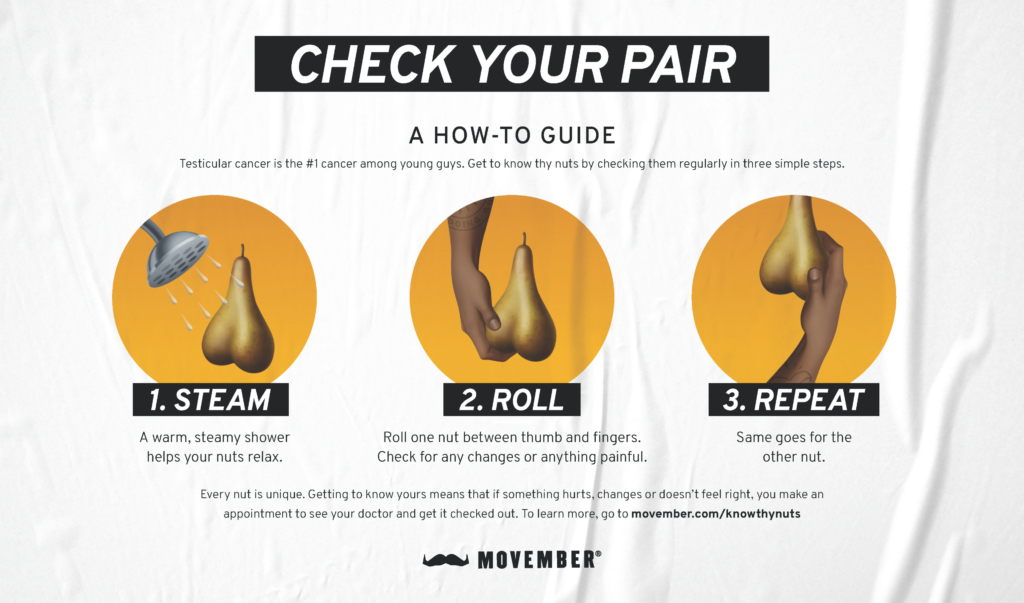November is Movember, a month dedicated to raising awareness about men’s health, including testicular cancer. While it’s one of the less common cancers, it’s essential for Australian men to understand how to self-check and detect early signs of testicular cancer. This article will guide you through a simple self-examination process and highlight why regular checks are important for your health.
What Is Testicular Cancer?
Testicular cancer occurs when abnormal cells grow in the testicles, the male reproductive glands located in the scrotum1. Testicular cancer is not a common cancer, but it is the second most common cancer in young men (aged 20 to 39), excluding non-melanoma skin cancer. Early detection can make a significant difference in successful treatment, which is why self-examination is crucial.
How Common Is Testicular Cancer in Australia?
According to the Australian Institute of Health and Welfare (AIHW), It is estimated that 1,026 people will be diagnosed with testicular cancer in 2024. The average age at diagnosis is 36 years old.2 The good news is that it has a high survival rate if detected early. However, it’s important not to delay seeking medical advice if you notice any abnormalities.
How to Perform a Testicular Self-Check
Conducting a self-examination for testicular cancer is quick and easy, and it only takes a few minutes. Here’s a step-by-step guide on how to check your pair 3:
- Choose the Right Time: The best time to perform a self-check is during or right after a warm shower or bath when the scrotum is relaxed.
- Examine Each Testicle Separately: Use both hands to gently roll each testicle between your fingers and thumb. It’s normal for one testicle to be slightly larger or to hang lower than the other.
- Feel for Lumps or Changes: While you’re examining, feel for any lumps, hard spots, or changes in size, shape, or texture. Testicular cancer typically presents as a painless lump, but some men may experience discomfort or swelling.
- Check the Epididymis: The epididymis is a small, coiled tube at the back of the testicle that feels like a soft ridge. Don’t mistake this for an abnormal lump.
- Know What’s Normal: Regular self-exams will help you understand what’s normal for your body and make it easier to notice any changes.

Testicular cancer signs and symptoms
Testicular cancer often presents without noticeable symptoms, but the most frequent sign is a painless swelling, lump, or change in the size or shape of a testicle4.
Other, less common symptoms can include:
- A sense of heaviness in the scrotum
- An uneven feeling in the testicles
- Discomfort or aching in the lower abdomen, scrotum, or testicle
- Persistent back pain
- Swelling or tenderness in the breast tissue, caused by hormonal changes from cancer cells
If you notice any lumps, swelling, pain, or changes in the size of your testicles, it’s important to see a doctor as soon as possible. Early diagnosis increases the chance of successful treatment, so don’t delay seeking professional advice.
Conclusion
Movember is a great reminder for men across Australia to take control of their health by regularly checking their testicles. Early detection is key to successfully treating testicular cancer, so make it a habit to perform self-exams monthly. If you notice anything unusual, don’t hesitate to visit your doctor.
References:
[1] Understanding Testicular Cancer, Cancer Council Australia, 2023. https://www.cancer.org.au/assets/pdf/understanding-testicular-cancer-booklet
[2] Australian Institute of Health and Welfare. Cancer data in Australia [Internet]. Canberra: Australian Institute of Health and Welfare, 2024 Available from: https://www.aihw.gov.au/reports/cancer/cancer-data-in-australia
[3] Movember, How’s your pair Hangin? https://au.movember.com/men-s-health/testicular-cancer
[4] Cancer Council Australia, 2024. https://www.cancer.org.au/cancer-information/types-of-cancer/testicular-cancer?_gl=11r5zs4s_gcl_auMTc5MDMwMjQ3My4xNzIyODMzOTg0_gaMTczOTMzNzcwOC4xNzIyODMzOTg0_ga_9CL7Y81H4Z*MTcyOTE0MTMwMy4xMC4xLjE3MjkxNDE1MDQuNjAuMC4w#cancer-symptoms